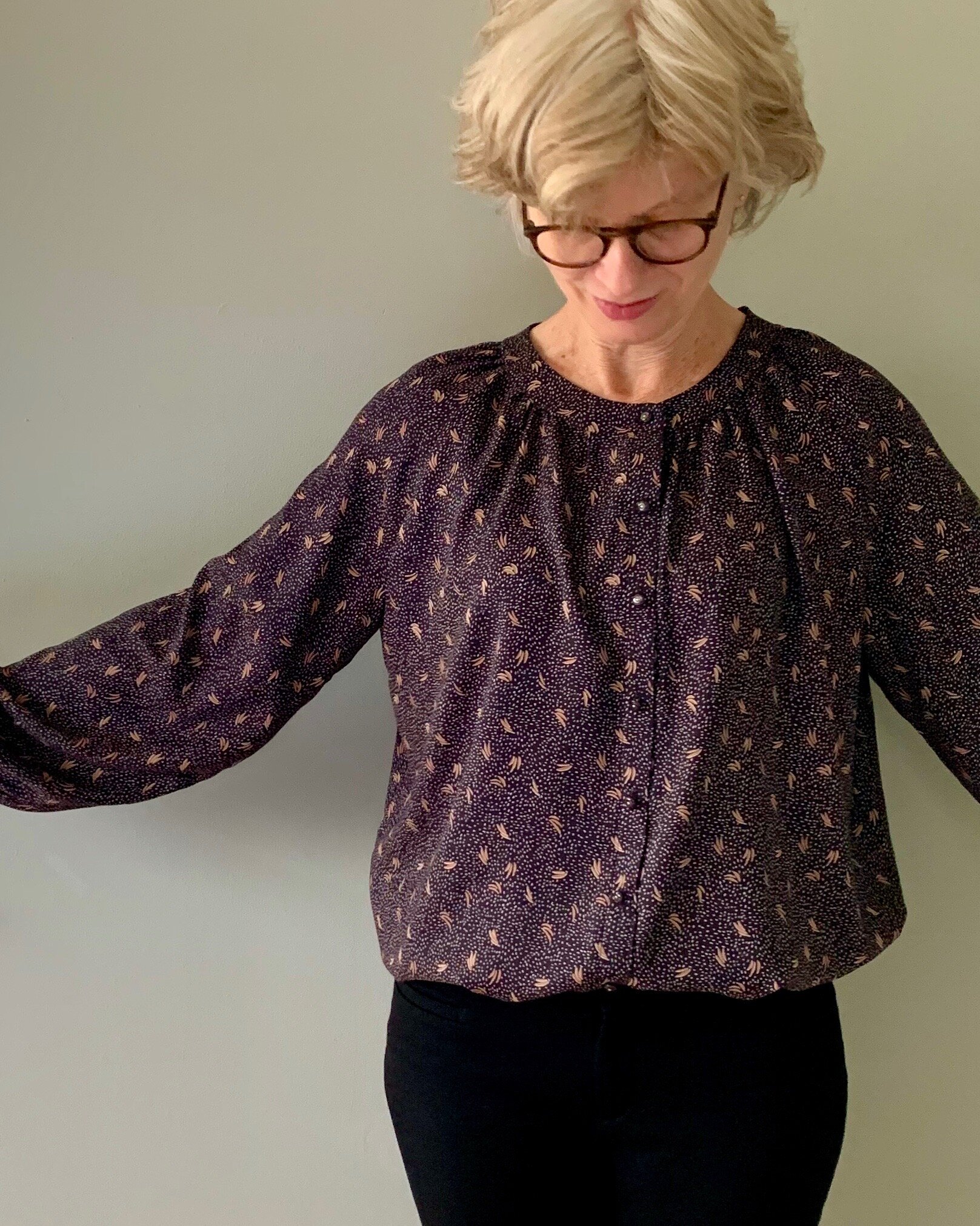Desert Performance Ruska
/
This is my first bona fide performance wear top!
I needed a long sleeve active wear top for a holiday weekend hiking trip in Joshua Tree National Park. Desert weather can be harsh- and I need both sun protection and climate control. Desert climate and making active wear are both pretty foreign to this Northern girl- so where to start?
To simplify things, I chose my favorite t-shirt pattern from Named Clothing Breaking the Pattern book- Ruska. I made four Ruska tops this past year, including two merino wool Ruska tops which are absolutely suitable for active pursuits. But this latest make turned out to be next level active wear.
Fabric choice was a big question mark. I know my way around natural fibers- since that’s predominately what I sew- but active wear fabric is another ball game. So, before buying, I did a little research.
I knew I needed a fabric with wicking power. This is true even in our cold weather climate here in Minnesota. Wicking means the fabric wicks moisture away and the fabric doesn’t absorb moisture- so after exertion (and sweating) you stay dry and comfortable. You want to avoid-sweating after a run or climb and then getting chilly because your shirt is wet. Wicking fabric also acts as a good insulator. Note the snow in the desert below.
Wool is a wicking fiber; it wicks water from the body. However, wool doesn’t dry as fast as some synthetics because the wool fibers absorb moisture. Polyester is a core fiber for athletic wear because of its moisture control benefits: it both dries rapidly (it doesn’t absorb moisture) and it wicks sweat from the body due to the yarn structure. Nylon has the same moisture control properties. In addition, nylon is also super strong and abrasion resistant- or long-lasting. Note, nylon is more expensive than polyester.
Stretch is the other key quality for performance wear. Again, natural fiber knits have stretch, but special stretch fibers provide four way stretch capacity, and/or better recovery- read- no bagging. So for performance fabric stretch, the fabric should contain Lycra, elastene or spandex. One active wear designer recommends the fabric contain at least 12% Lycra, spandex or elastane to give you performance level freedom of movement.
This particular performance wear fabric is from Fabric.com. It is described as an athletic medium weight double knit. The description suggests it is “perfect for athletic tops, leggings, low impact sports bras, dancewear and swimwear.” That pretty much covers all the performance bases. The fabric content is 75% polyester and 25% Lycra- which is plenty of Lycra for a maximum range of movement. Bonus- it’s a floral, for cute desert hiking style. Another bonus quality of polyester is it’s color vibrancy and ability to hold color- which means this fabric will continue to blossom brightly even after many desert suns.
Sewing with this athletic knit was a stroll in the park. The knit is super stable, absolutely no raveling or curling. I sewed this up on my regular machine with a straight stitch even though I have a zig zag option on my machine. When sewing knits, I simply increase the stitch length slightly to 3 mm and hold onto the fabric both in front of and behind the needle. With both hands, I pull the fabric very slightly -and gently- as it feeds under the presser foot. And that’s it.
Happily, this beauty performed outstandingly while covering approximately 10 miles in one day and comfortably withstanding wind and sun and changing temps. I plan to make some bottoms out of this fabric soon.







































